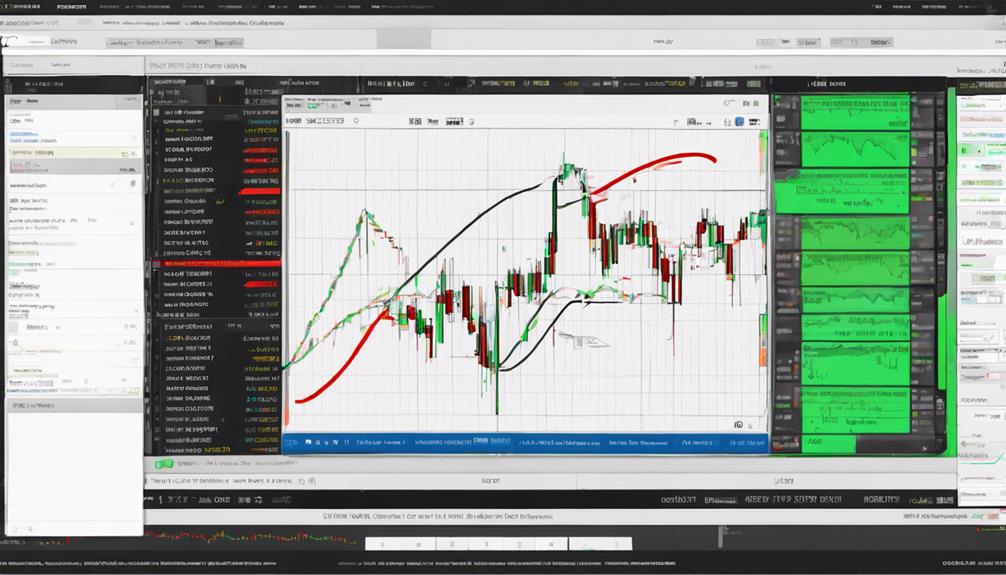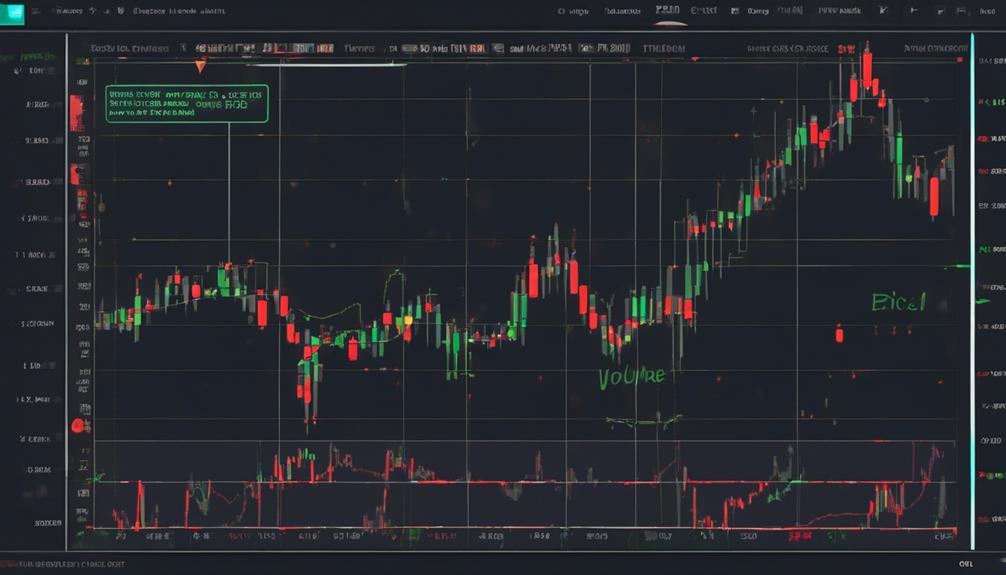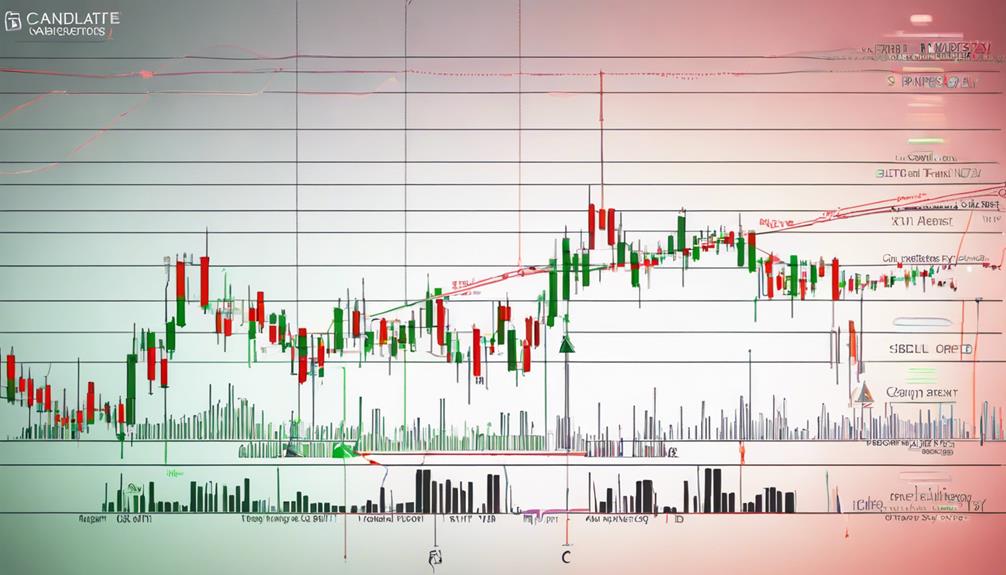Understanding the intricacies of the Ultimate Oscillator indicator is fundamental for any trader seeking to enhance their technical analysis skills.
From grasping the core concept to deciphering buy/sell signals and formulating effective trading strategies, the journey to mastering this tool is multifaceted.
Each step towards unraveling the Ultimate Oscillator's potential opens a gateway to a deeper comprehension of market dynamics and price movements.
As we delve into the top five steps to learn this indicator, a realm of possibilities unfolds, offering traders a strategic edge in navigating the complexities of financial markets.
Understanding Ultimate Oscillator Basics
When delving into the foundational aspects of the Ultimate Oscillator, it is imperative to grasp the core principles that underpin its functionality and significance in technical analysis. The Ultimate Oscillator is a technical analysis tool developed by Larry Williams in 1976. It is an oscillator that provides insights into potential buy and sell signals based on overbought and oversold conditions. By incorporating three different time periods (7, 14, and 28), this indicator aims to capture short, intermediate, and long-term market trends.
One key aspect of the Ultimate Oscillator is its ability to generate buy and sell signals. Traders often look for divergences between price action and the oscillator to identify potential market reversals. When the oscillator moves into overbought territory, it suggests that the asset may be overvalued, signaling a possible selling opportunity. Conversely, when the oscillator dips into oversold levels, it indicates that the asset may be undervalued, presenting a potential buying opportunity. Mastering the interpretation of these signals is crucial for successful trading decisions.
Calculating Ultimate Oscillator Formula

To delve into the calculation process of the Ultimate Oscillator formula, one must understand its foundation in weighted averages of 7, 14, and 28 period values, incorporating metrics such as Buying Pressure (BP) and True Range (TR) to determine the oscillator's values within a range of 0 to 100. Here's a breakdown of the Ultimate Oscillator formula:
- Weighted Averages: The Ultimate Oscillator formula calculates the average of 7, 14, and 28 period values, assigning specific weights to each period based on their importance in the calculation process.
- Buying Pressure (BP): BP is determined by finding the difference between the close and the minimum of the low or the previous close, reflecting the buying momentum in the market.
- True Range (TR): TR is calculated as the highest value among the high, previous close minus the lowest value among the low, previous close, capturing the true volatility of the asset.
- Final Ultimate Oscillator Value: The final Ultimate Oscillator value is computed by combining the weighted averages of the 7, 14, and 28 period values in a specific proportion, leading to a conclusive reading between 0 to 100.
Implementing Trading Strategies With UO

Utilize the Ultimate Oscillator (UO) as a key tool in identifying market conditions conducive to potential trade signals, particularly focusing on overbought levels above 70 and oversold levels below 30. When implementing trading strategies with UO, pay close attention to spotting bullish and bearish divergences in conjunction with price action to enhance trading accuracy.
Additionally, consider looking for confirmation signals from moving average crossovers to validate trade setups effectively. To improve trading outcomes, avoid relying solely on UO by integrating it with complementary indicators like the Relative Strength Index (RSI) for a more comprehensive analysis.
Furthermore, use UO not only to confirm existing trends but also to predict potential reversals, thus aiding in determining optimal trade entry and exit timing. By incorporating these strategies, traders can enhance their decision-making process and strive for more successful trading outcomes in the market.
Interpreting Buy and Sell Signals

Interpretation of buy and sell signals generated by the Ultimate Oscillator is crucial for making informed trading decisions in the market. To effectively interpret these signals, traders should consider the following:
- Buy signals: When the Ultimate Oscillator falls below 30, it indicates an oversold condition, suggesting a potential buy opportunity.
- Sell signals: Conversely, sell signals are triggered when the Ultimate Oscillator rises above 70, signaling an overbought scenario where selling may be appropriate.
- Adjust trading strategies: Traders can adjust their strategies based on the overbought or oversold conditions highlighted by the Ultimate Oscillator to optimize their trading approach.
- Confirm trends: Utilize the Ultimate Oscillator to confirm trends in the market, providing valuable insights that can help in making well-informed trading decisions and adjusting positions accordingly.
Utilizing True Range for Accurate Analysis

How does True Range contribute to enhancing the accuracy of technical analysis when utilizing the Ultimate Oscillator indicator?
True Range (TR) plays a crucial role in improving the precision of technical analysis when using the Ultimate Oscillator indicator. TR measures the price volatility by considering the difference between the high and low prices, providing insights into market fluctuations. By factoring in the previous close, TR captures potential price gaps and overlaps, offering a comprehensive view of the price movement range over a specific period.
The accurate calculation of True Range is vital for the precise determination of Buying Pressure (BP) and the overall Ultimate Oscillator formula. This precise calculation ensures that the Ultimate Oscillator generates reliable buy and sell signals, enhancing its effectiveness in analyzing market trends.
What Are the Best Steps to Learn and Utilize the Ultimate Oscillator Indicator?
Learning to utilize ultimate oscillator indicator involves first understanding its formula and how it oscillates. Start by identifying overbought and oversold levels. Use it in conjunction with other technical indicators to confirm trends. Practice using it on historical data before implementing it in live trading.
What Are the Benefits of Learning the Ultimate Oscillator Indicator?
Learning to use the ultimate oscillator indicator essential for traders looking to improve their technical analysis skills. This powerful tool helps identify overbought and oversold conditions in the market, leading to better entry and exit points. Mastering this indicator can enhance trading strategies and improve overall performance.
Frequently Asked Questions
How Do You Use the Ultimate Oscillator Indicator?
The Ultimate Oscillator indicator, incorporating 7, 14, and 28 period inputs, measures momentum across varied timeframes. It oscillates from 0 to 100, signaling overbought levels above 70 and oversold levels below 30. Understanding these levels aids in identifying potential buy and sell signals accurately.
How Do You Study Awesome Oscillator?
To study the Awesome Oscillator, understand its calculation involving the 34-period and 5-period simple moving averages. Analyze its values to identify market momentum, bullish or bearish trends, and potential reversals. Mastery of these concepts enhances trading strategies.
How Do You Calculate Ultimate Oscillator in Excel?
To calculate the Ultimate Oscillator in Excel, use the formula: 100 * [(4 * Average 7) + (2 * Average 14) + Average 28] / (4 + 2 + 1). This indicator combines BP and TR averages over 7, 14, and 28 periods, providing a comprehensive momentum reading for trading decisions.
How Do You Use an Oscillator Indicator?
Oscillator indicators like the Ultimate Oscillator gauge market momentum, aiding in identifying overbought and oversold conditions. By combining short, medium, and long-term momentum, they offer a comprehensive view for traders to confirm buy and sell signals effectively.
Conclusion
In conclusion, mastering the Ultimate Oscillator indicator requires a thorough understanding of its concept, formula, trading strategies, buy/sell signals, and utilization of True Range for accurate analysis.
By delving into these key aspects with precision and attention to detail, traders can enhance their decision-making process and improve the reliability of their trading strategies.
Just as a skilled craftsman meticulously hones their tools, traders must diligently study and apply the Ultimate Oscillator to achieve success in the financial markets.
